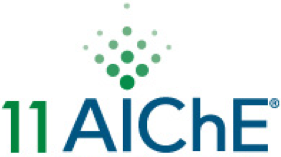When produced from waste lignocellulosic materials, hydrogen is one of the most promising options for a long-term, net-zero emission energy carrier. A major barrier to industrial scale production of bio-H
2 is its techno-economic feasibility. Advances in consolidated bioprocessing are required to improve the rates of cellulose hydrolysis and its subsequent fermentation to H
2.
Clostridium thermocellum is a thermophilic anaerobic microbe with one of the highest known rates of cellulose degradation. The goal of this study is to improve substrate utilization by employing a sequencing batch reactor, which would increase substrate hydrolysis leading to higher rate and yield of hydrogen. Reactor parameters and substrate loading were first optimized in batch mode, using
C. thermocellum grown on avicel and pretreated cornstover at 1, 2.5 and 5 g/L. We observed that an increase in carbon loading led to higher rates of H
2 production yet with a lower H
2 molar yield (mol H
2/mol hexose) in both substrates. These data guide the fermentation in sequencing batch mode, which was initiated by running a 2.5 g/L fermentation for 24 hours followed by settling the unfermented solid substrate along with bacteria for one hour. This was then proceeded by removing 500 mL of the clear supernatant using a peristaltic pump, adding 500 mL of fresh media (gassed out with nitrogen gas) and substrate and turning the agitation back on. Four cycles were completed for each carbon loading condition. The hydraulic residence time (HRT) tested was 48 hrs, with a carbon loading of 2.5 and 5.0 g/L/d.
Initial results indicate that at a carbon loading of 2.5 g/L/day, all of the substrate was consumed and the bacteria did not settle when agitation was turned off. The average concentration of protein in the supernatant after settling for an hour was 164 mg/mL. At 5.0 g/L/d loading, we observed an excess of substrate present in the reactor and the avicel turned orange, which is an indicative of presence of cellulosome hence bacterial attachment. Protein concentrations were measured before settling (208 mg/mL), and in the supernatant after settling (38 mg/mL). The data suggest that by operating sequencing-batch fermentation with excess cellulose, approximately 80% of the bacterial biomass can be retained, presumably fully adapted to degrade cellulose. Additionally, the average rate of hydrogen production was increased from 0.60 to 0.92 mmol/L/hr during the 5 g/L/d carbon loading condition. One of the main benefits of sequencing-batch operation is the removal of the lag phase at the beginning of conventional batch-fermentations, once adapted. The time to peak hydrogen production in batch one is almost 19 hours. By the fourth fed-batch cycle, this number drops to 4 hrs. Collectively our findings form the basis for further optimization to improve the techno-economic feasibility of hydrogen production via fermentation.


